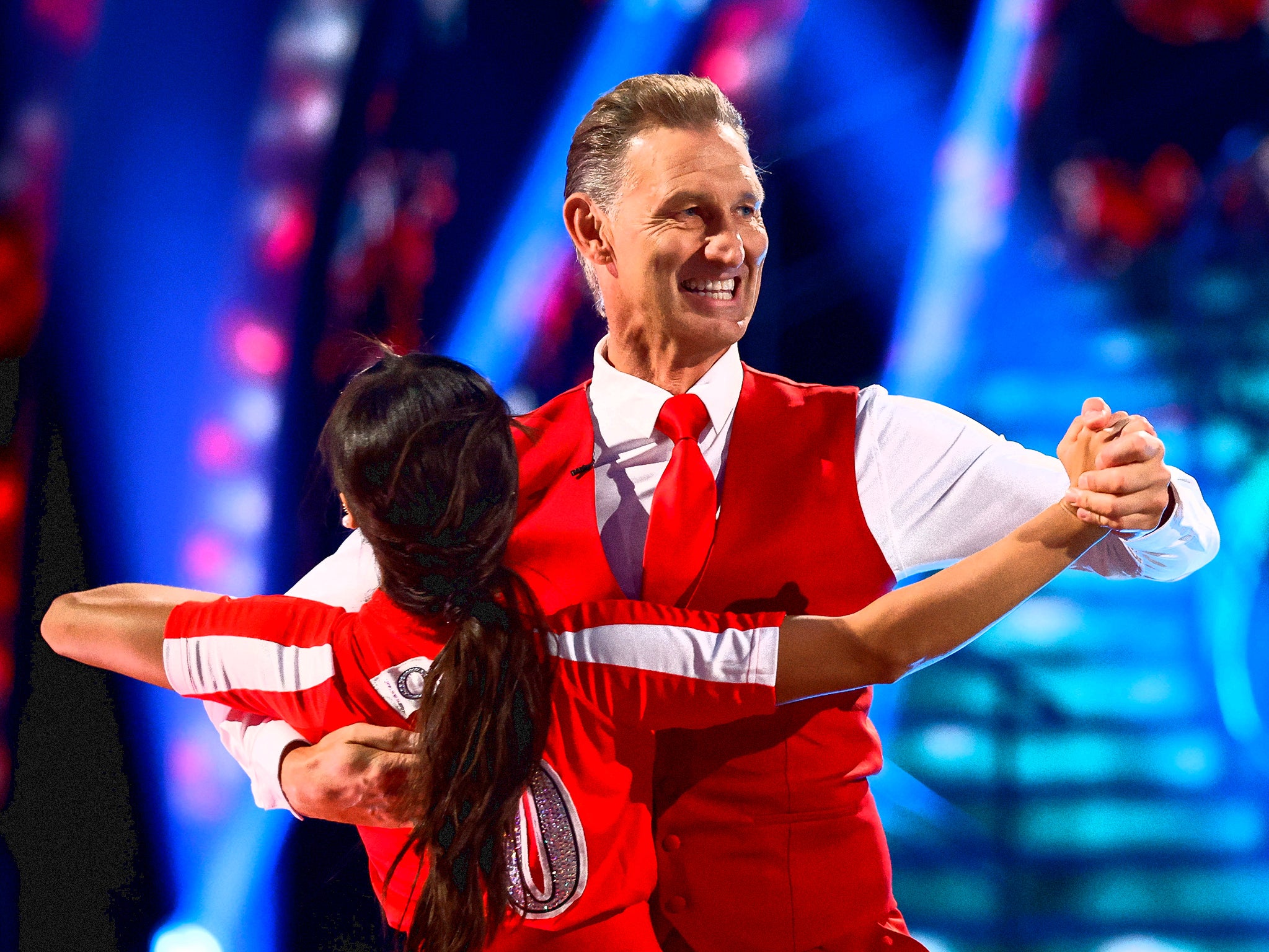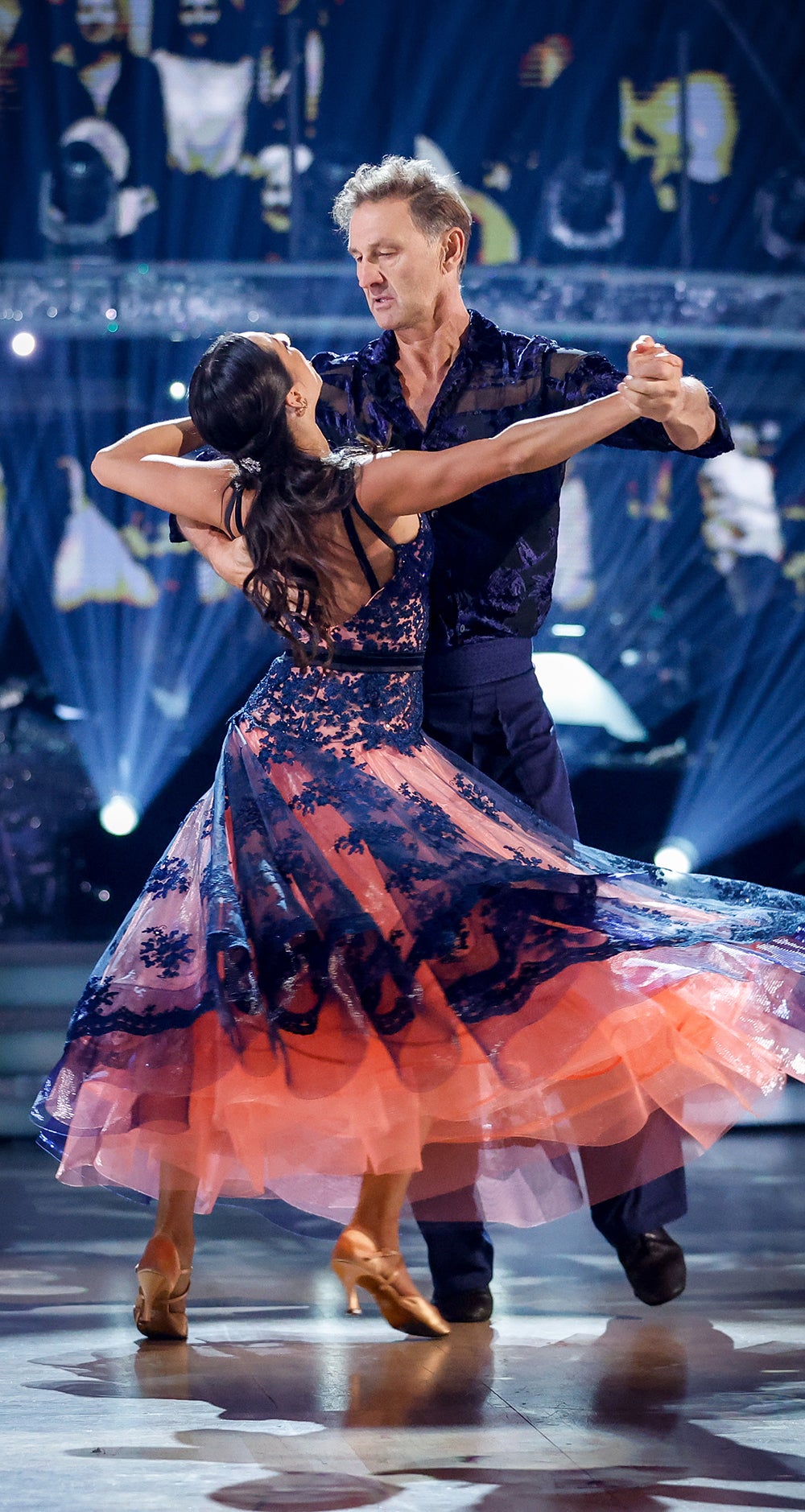The science behind why it doesn’t matter to us that Strictly’s Tony Adams can’t dance
Poppy Adams, who is married to former footballer and current ‘Strictly’ star Tony Adams, has described her husband’s dancing as ‘s***’. So why does he seem to be getting so much joy from it? Tom Ough investigates a very curious human phenomenon

Your support helps us to tell the story
From reproductive rights to climate change to Big Tech, The Independent is on the ground when the story is developing. Whether it's investigating the financials of Elon Musk's pro-Trump PAC or producing our latest documentary, 'The A Word', which shines a light on the American women fighting for reproductive rights, we know how important it is to parse out the facts from the messaging.
At such a critical moment in US history, we need reporters on the ground. Your donation allows us to keep sending journalists to speak to both sides of the story.
The Independent is trusted by Americans across the entire political spectrum. And unlike many other quality news outlets, we choose not to lock Americans out of our reporting and analysis with paywalls. We believe quality journalism should be available to everyone, paid for by those who can afford it.
Your support makes all the difference.It wasn’t the most sugarcoated of uxorial endorsements, but it was an endorsement nevertheless. “He’s so s***,” said Poppy Adams of her husband and his dancing, “and I have never loved him more.”
Her husband, the former footballer Tony Adams, is a contestant on this year’s Strictly Come Dancing. He has been called “its breakout star: too tall, too wooden, too forgetful, brilliantly unselfconscious”. Claudia Winkleman had to apologise during Sunday night’s episode for Adams excitedly swearing as the judges delivered their verdict – “brave, bonkers, and totally game.”
Adams’ performances have improved. Following last weekend’s sequinned-shorted striptease, he and his partner, Katya Jones, danced an American smooth. They avoided the dance-off and remain in the competition.
Shirley Ballas, one of the four judges, told Adams and Jones: “Last week it was pure comedy, and everyone enjoyed it, but this week you put on your serious hat. Not all the footwork was great, but there was a good effort ... some beautiful footwork in the beginning. Posture’s getting better, your frame, but can we talk about the chances you took on your lifts?” she said approvingly. (Swinging Jones around midway through the dance, Adams displayed more ambition than precision, but managed not to drop her.)
Anton du Beke, Ballas’ judging colleague, was pithier. “I think for a second about you in week one and you now. Staggering.”
His wife, speaking to The Times on Saturday, might not class him as a natural, but Adams’ earnest efforts to improve his dancing make him a fine ambassador for those who can’t dance but do it all the same. Whichever culture you inhabit, it is likely that dancing is a part of it, and wherever you live in the world, there are three certainties: death, taxes, and dancefloors. Some of us come to those dancefloors willingly, some of us are dragged grudgingly, but to gyrate rhythmically to music in the presence of others – the closer you look at this custom, the stranger it seems – is an activity whose roots in the human psyche go deep. Why do we do it? And why do we do it even if we are, in Poppy Adams’ words, “s***”?
An important clue is in the animal kingdom. Honey bees perform a “waggle dance” to communicate the location of nectar and pollen, but they are an exception to the general rule that animals dance as part of courtship. Spiders do it, birds do it – the flamenco dance imitates the display of male flamingos – and even whales do it. In most cases, the males of the species attempt to demonstrate their health and vigour through these challenging displays of athleticism and coordination. Their reward? The approval of a female, and with that the chance to get their leg over. Or their eight legs over. Or their fin over.
Dance is similarly important to human courtship. This is documented in both scientific literature and on dancefloors everywhere. There is “accumulating evidence,” a trio of researchers dryly put it in the journal Personality and Individual Differences in 2012, “that male dance movements convey aspects of both physical and personality ‘qualities’, and that women are sensitive to these cues in terms of attractiveness decisions.”
In sharing some guidance, the researchers referred to a previous experiment. “It was found that ‘good’ dancers displayed larger and more variable movements in relation to bending and twisting movements of their head/neck and torso, and faster bending and twisting movements of their right knee.” (If you meet your soulmate this weekend as a result of their or your seductive knee-twisting, you can thank The Independent.)
Human dancing, of course, is practised by both men and women. It is far more varied than a simple display of male prowess. As Andrea Ravignani, a research group leader at the Max Planck Institute for Psycholinguistics, points out, culture is a huge determinant of behaviour. In an analysis of modern humans, says Dr Ravignani, “we might see that one of the two genders is much more eager to perform dancing or to take dancing classes and so on and so forth. But for many behaviours we see in humans today where one gender does more or less of something, if we travelled back in time 1,000 years, maybe it was the opposite.”

But should dance be, in at least some contexts and to some extent, a display for potential mates, then we would expect it to be obvious who is good at it and who is not. That is the point of mating displays: sorting the wheat from the chaff. The physical differences between good dancing and bad dancing are minute, but we are exquisitely attuned to them. With no disrespect intended to Adams, we can spot a dad dancer from a mile off. What this theory also suggests is that, however deeply buried it might be, the instinct to dance lurks somewhere within all of us. Without it, our ancestors would have suffered a significant disadvantage in the battle to reproduce.
Ravignani’s research suggests that we are all keenly attuned to rhythm. “Even when people say ‘I cannot dance’, or ‘I cannot sing’, they’re still perceiving the beat,” he says. “They’re still perceiving patterns and making predictions of what’s happening next. To many the problem” – when someone considers themselves, or is considered, a bad dancer – “is practice.”
In the right context, then, most people can probably extract some enjoyment from dance, even if their lack of aptitude normally dissuades them from participating. Adams might be enjoying Strictly more than he expected. Ravignani also points out the importance of dance, in the animal kingdom and within humans, for pair bonding – demonstrating the strength of a couple’s relationship. No wonder so many Strictly competitors have affairs with their dance partners.
There are other hypotheses about the origins of dance. Bronwyn Tarr, a human behavioural scientist, sees dancing as a way of supporting group cohesion. Apes physically groom each other, but humans, who operate in bigger groups, had to evolve alternative bonding behaviour that worked on a larger scale than via grooming one-on-ones. “I think that music is a great hack for this,” Dr Tarr said in an interview. “Music gives you a rhythmic scaffolding that a lot of people can attend to simultaneously. Music allows us to synchronise our movements in time, coordinate and dance together. You can see flash mobs of hundreds of people all joining into one cohesive unit.
“What we think is happening here is that those same chemical networks used by primates to establish their bonding are being activated for us too – networks that involve the pleasure-pain circuitry and allow us to enjoy a positive, natural high in the presence of other people, thereby reinforcing feelings of belonging with that group.”
Again, this theory implies that you don’t have to be good at dancing to enjoy it, so long as it’s in a group context. The same goes for another hypothesis, the one presented in Joseph Jordania’s aposematic model of human evolution. (“Aposematism” is an animal’s demonstration to potential predators that it is not worth eating.) “My suggestion,” writes Jordania, an evolutionary musicologist, “is that our ancestors turned loud singing into a central element of their defence system against predators. They started using loud, rhythmic singing and shouting accompanied by vigorous, threatening body movements and object throwing to defend themselves from predators.” The Haka is an intriguing example of how this might have worked, down to the imitation of predator-deterring animals such as snakes.
These “very intriguing” hypotheses merit experimentation, says Ravignani – one being tested against the other. As for Poppy Adams’ loving comment about her husband’s dancing being “s***”: “Probably that’s one more example that sexual selection is not only based on dance.” Hope for us all, even the dad dancers.



Join our commenting forum
Join thought-provoking conversations, follow other Independent readers and see their replies
Comments